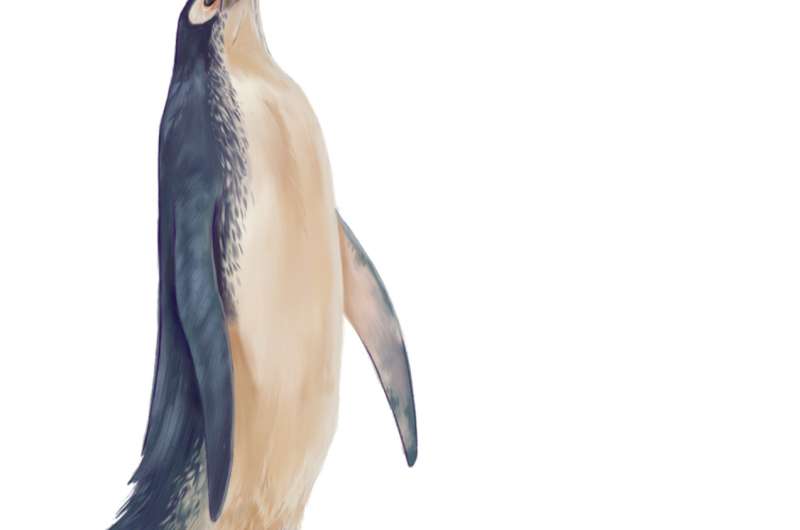New sphenisciform fossil further resolves bauplan of extinct giant penguins

Penguins are descendants of seabirds that lost the ability to fly more than 60 million years ago in exchange for chasing the abundant food available in the ocean. New Zealand is a key area for understanding the diversity of the extinct penguins and has even revealed the existence of 'giant' penguin species (larger than living penguins). A new study describing a remarkably complete giant penguin skeleton from the Oligocene, Kawhia Harbour in the North Island of New Zealand was presented by Simone Giovanardi, Massey University Albany, Auckland, New Zealand, at this year's annual meeting of the Society of Vertebrate Paleontology held this year in Brisbane, Australia.
These giant penguins differed from their living descendants in the length of their front limbs and elongated beaks, perhaps suggesting differences in ecological roles when compared with living penguins. The preserved hindlimbs of the new North Island fossil are also significantly longer than all previously described specimens.
Giovanardi adds, "The Kawhia giant penguin is mostly complete and largely articulated in life position, which helps a great deal with reconstructing the relatively long and slender body." This specimen suggests a mixture of characteristics of an older body plan found in other Eocene-Oligocene giant penguins and the one found in the more derived giant penguin, Kairuku.
To date, most of the giant penguins found in New Zealand have been discovered in the South Island. This fossil was found in an Oligocene silty mudstone from the North Island of New Zealand and currently represents the most complete pre-Pleistocene vertebrate reported from this region. Giovanardi concludes by stating, "The North Island of New Zealand has its own paleontological tale to tell."





















